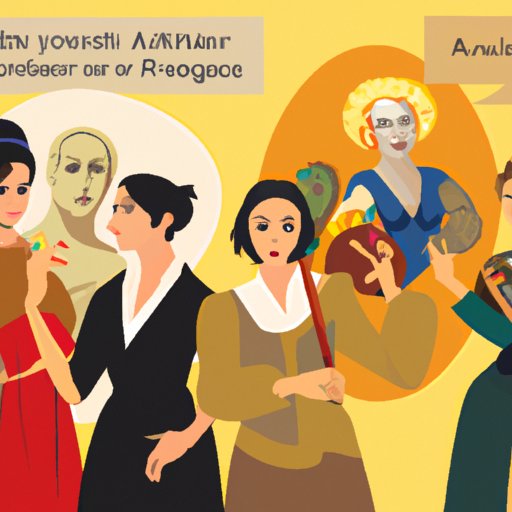Introduction
The question “Why have there been no great women artists?” has been asked since the 1970s, when feminist art historian Linda Nochlin wrote her groundbreaking essay “Why Have There Been No Great Women Artists?” In it, she argued that the lack of recognition for female artists was due not to any lack of talent or skill, but rather to the systemic exclusion of women from the art world. Since then, scholars have explored the various social, cultural, and systematic barriers that have prevented women from achieving artistic greatness.
Examining the Social and Cultural Barriers Women Artists Have Faced
Gender bias in the art world has long been a major barrier to female artists achieving recognition. Women have traditionally been excluded from the art world, with galleries, museums, and other institutions excluding them from exhibitions and collections. This has had a significant impact on the way women are represented in art history, with male artists often receiving more attention than their female counterparts. Furthermore, women have been subject to patriarchal standards of beauty and artistic expression, which further contributes to their lack of recognition.
Class and race also play a role in preventing women from achieving greatness in the arts. Financial constraints mean that many women are unable to pursue formal training in the arts, while racial discrimination means that certain groups of women are further excluded from the art world. As a result, women from less privileged backgrounds are often overlooked when it comes to artistic recognition.

Investigating How Education Has Denied Women Access to Creative Expression
In addition to social and cultural barriers, formal education has also played a role in preventing women from accessing creative expression. Historically, educational institutions have placed greater emphasis on the sciences, mathematics, and other “male-dominated” subjects, rather than encouraging students to pursue creative pursuits. As a result, many women were discouraged from pursuing a career in the arts, instead opting for more “socially acceptable” occupations.
Despite these obstacles, some women have managed to overcome educational barriers to become successful artists. For example, French painter Marie Laurencin, who was born into a middle-class family, was able to receive formal training in art at the Académie des Beaux-Arts in Paris. Similarly, American artist Georgia O’Keeffe was able to pursue a career in art despite having no formal training.

Contemporary Women Artists Redefining Art History
Today, women are challenging traditional standards of art history and redefining what it means to be an artist. Contemporary women artists are pushing boundaries and creating work that is both innovative and thought-provoking. From Yayoi Kusama’s vibrant installations to Kara Walker’s powerful paintings, women are making their mark on the art world in ways that are unapologetic and inspiring.
Furthermore, women are increasingly taking on roles as curators, directors, and other positions of power within the art world. This is enabling them to shape the narrative of art history and ensure that their voices are heard. Examples of such women include Thelma Golden, director of the Studio Museum in Harlem, and Maria Balshaw, director of the Tate Modern in London.
Conclusion
This article has explored the social, cultural, and systematic barriers that have prevented women from being recognized as great artists. From gender bias in the art world to the lack of access to formal education, women have faced numerous obstacles throughout history. Despite these challenges, contemporary women artists are redefining art history and proving that creativity knows no bounds. By encouraging more women to pursue creative expression, we can create a more inclusive art world and ensure that all voices are heard.
(Note: Is this article not meeting your expectations? Do you have knowledge or insights to share? Unlock new opportunities and expand your reach by joining our authors team. Click Registration to join us and share your expertise with our readers.)
